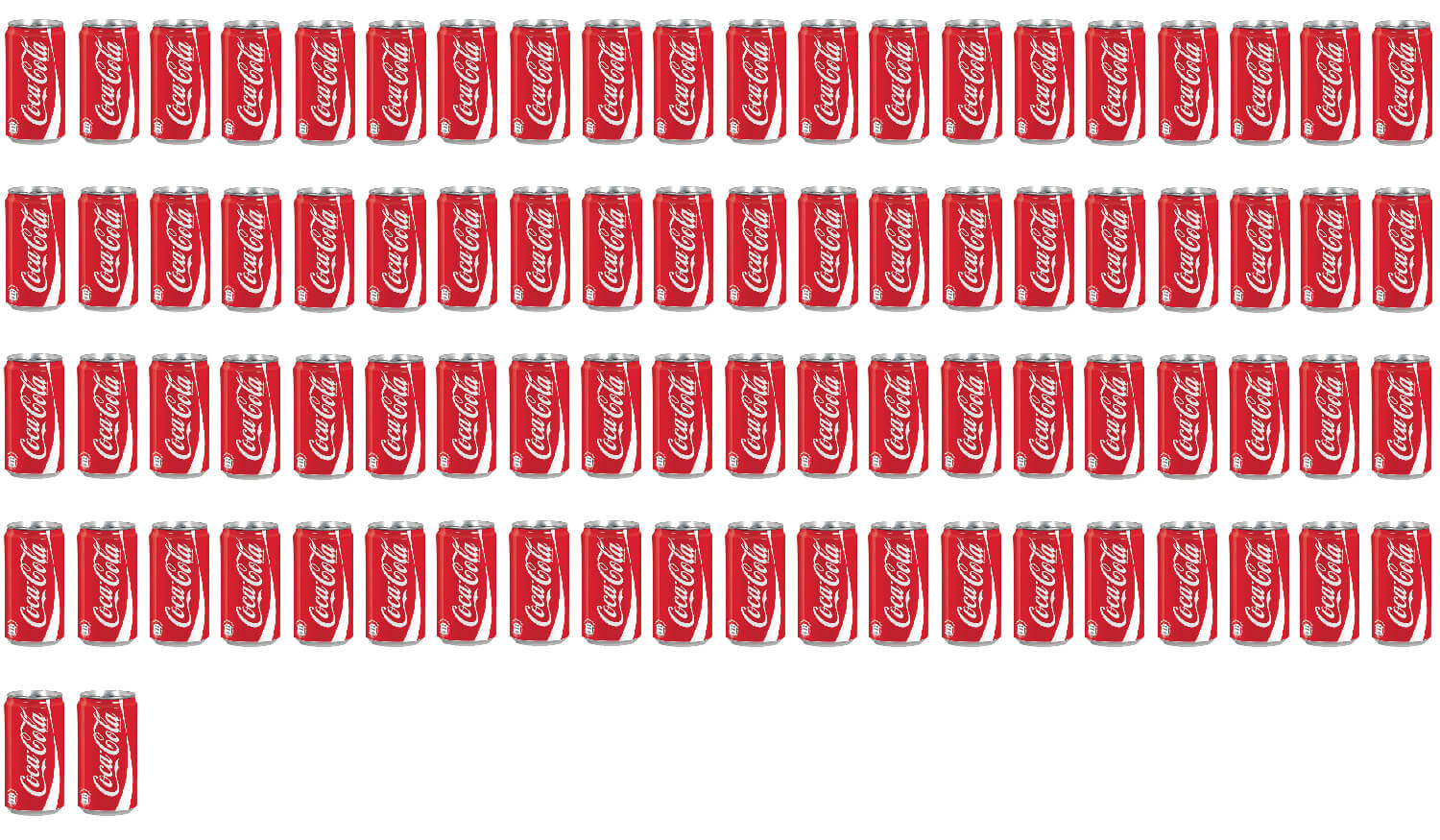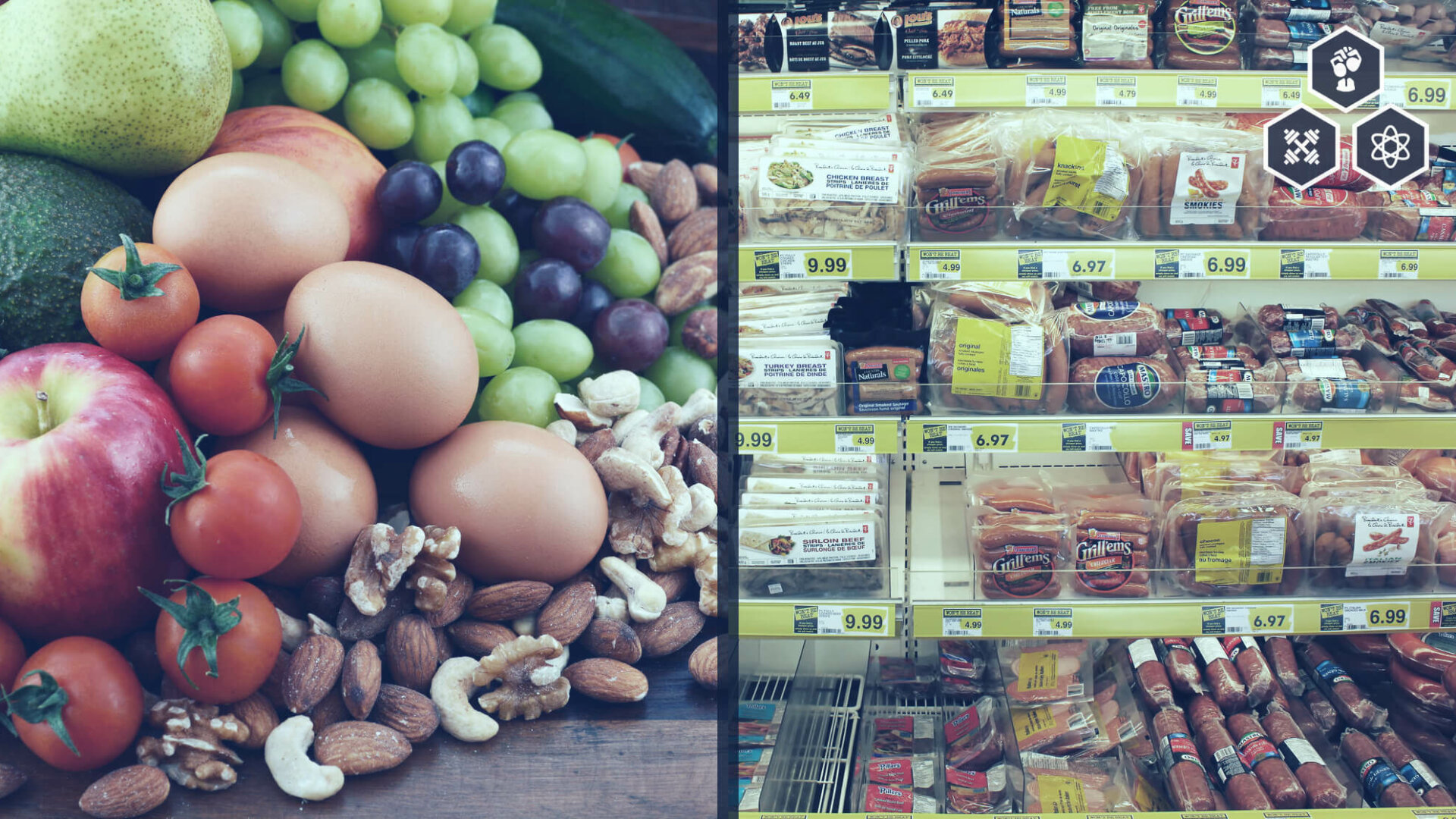The debate between diets spanning Whole30 to IIFYM, presents a tangled web of anecdote and empirical evidence that could reasonably confirm any bias. As often is the case, both camps are valid but context and execution matter.
Regardless of which side of the fence you fall on, the division often lies along an ambiguous understanding of food processing. Whole food advocates are quick to categorically restrict processed foods, declaring them as being a primary cause of obesity and metabolic pathologies. Flexible dieters rightfully refute this charge by referencing the energy balance equation as being the most critical component of fat-loss. What matters is a negative energy balance, regardless of the foods you eat to achieve it. Suggesting overall dietary adherence is supported by having variety in nutritional options.
But ultimately, what are we talking about when we say ‘processed foods’?
Quick history
In the 1920s, women began to be move away from preparing foods from scratch as ready-to-cook foods were becoming more available. As with many other sociocultural changes, World War I brought about new methods of food processing, including canned and frozen foods. The combined effect of food manufactures promoting ads promising to save time for housewives with the innovation of home kitchens like gas stoves and electric refrigerators – more types of food could be purchased and stored.
Some of these new brands from the 1920s:
- Baby Ruth candy bar
- Wonder Bread
- Yoo-Hoo beverage
- VanCamp’s canned pork and beans
- Reese’s peanut butter cups
- Welch’s grape jelly
- Popsicles
- Wheaties
- Kool-Aid
- Peter Pan peanut butter
- Velveeta cheese
On a sweeter note. Despite the search for sugar substitutes beginning as early as 1806, a century and a half later American scientists discovered a way to use enzymes to convert glucose in cornstarch to fructose. Paving the way for Japanese scientist Yoshiyuki Takasaki in 1967 to create a cost-effective industrial process to perform it. It was a hit, food companies loved the low cost and the ease with which liquid corn syrup could be dissolved into sodas. Welcome, high fructose corn syrup. An ingredient that could be leveraged for its sweetness and stability relative to sucrose.
Now the purpose of this chemical manipulation of food is probably obvious. The rationale is to maximize the accessibility of energy in these foods while simultaneously stabilizing the food in a flavorful non-perishable form. Well, how did we do?
Effects of food processing
It’s important to note that not all food types or processing methods to preserve them are equal. For instance, vegetables and meats are the most vulnerable to processing methods utilizing heat – significantly reducing the energy availability. Whereas the endogenous energetic value of sugar, fats, and grains are largely unaffected by these same processing methods [1].
This energetic loss is only one type of damage that results from excessive food processing. We cannot overlook what happens to the vitamin, mineral, and enzymatic composition changes that result from conventional processing methods. In today’s increasingly energy rich, nutrient poor dietary landscape, it’s more critical than ever we understand the nutritional implications of food production.
Importantly, all types of food processing involve the application of heat at some point in the procedure, even freezing requires blanching either by boiling or irradiating with microwaves. Thirty five percent of the water-soluble vitamins in spinach can be destroyed by hot water blanching. Surpassed even still, is canning foods which require an even longer heating process. Up to 90% of the vitamin composition in vegetables and fruit (~80%) can be lost during this type of processing, with some variation between the type of vegetable and the vitamin being measured [1].
In short, the more heat, the more destruction induced on the vitamin composition of the food.
Importantly for vegetarians, grains such as: wheat, rye, oats, rice, corn, and barley all lose considerable vitamin composition during the processing methods between the farm and your mouth. For those of you that use grains to occupy a significant portion of your diet need to pay careful attention to compensate for the ~80% decreases that results from conventional processing of these foods. Vitamin supplementation may be particularly important for you.
There’s one more important part of this discussion before moving on, endogenous enzymes, a primary facilitator of digestion and energy utilization of food. Although these naturally occurring enzymes play a role in taste, texture, and aroma, they can work against preservation efforts. Immediately upon harvesting, and increasingly so overtime, the enzyme-catalyzed biodegradation begins to breakdown the food into its simplest metabolic units. Clearly, why some processing methods aim to inactivate these enzymes to prevent over ripening or spoilage. But our ingenuity in dramatically stalling food’s natural aging process is a double-edged sword. The very enzymes that are prevented from working their ripening magic also negate the beneficial action these enzymes have on digestion and nutrient absorption in the small intestine.
Based on this evidence, you can reasonably assume the more a food is processed, the more vitamins, nutrients, and endogenous enzymes are inactivated or destroyed [1].
Does that mean we need to stick exclusively to natural whole foods with minimal or no processing? Not entirely. Although I would say, the lower your calorie intake is, the more important the nutrient availability, as your opportunities to obtain essential vitamins and minerals are inherently reduced. In any case, you should try to incorporate these nutrient dense foods as much as possible when given the option.
For most of us, food accessibility is not the limiting factor – in fact, its abundance is part of the problem. Particularly if you’re trying to achieve a lean body composition, you aren’t as much concerned with nutrient availability as you are with managing overall consumption of energy.
But could the reduced nutrient availability of processed foods cause overeating to subconsciously bridge this nutritional gap?
Short answer: yes, it could.
Although flexibility in dietary practice appears to be an important component of sustainability and adherence, it also presents some challenges. Part of the luxury of flexible dieting is that nothing is off limits so long as you’re staying within your calorie and macronutrient parameters. However, it appears certain foods make staying within those limits uniquely challenging. Failing to account for qualities like satiation could make weight management and ultimately health, unnecessarily challenging.
Susana Holt and colleagues aimed to identify an index of satiation for the most common foods. [2] These studies demonstrate that isocaloric servings of different foods result in a wide range of satiation. Here is the top and bottom of that list, going from most to least satiating:
Provide MOST satiation per caloric unit:
- Potatoes, boiled
- Ling fish
- Porridge/Oatmeal
- Oranges
- Apples
- Brown pasta
- Beef
Provide LEAST satiation per caloric unit:
- Mars candy bar
- Doughnuts
- Cake
- Croissant
Based on this index, researchers could identify food qualities that correlated with satiation. Positively correlated with satiety ratings were protein, fiber, and water content of the food source being measured. Whereas fat content was negatively correlated with satiety [2].
As it relates to our discussion, there are two critical factors at play during and after a meal that signal to your brain you are sufficiently satisfied. One is the stretch receptors in your stomach that respond to food volume, the second is the nutrient composition being absorbed in your small intestine [3]. Presumably, this would imply a benefit to eating voluminous foods that are nutrient dense per calorie.
You don’t live in a lab, you operate in a world that presents immeasurable food options each with pervasive physiological and psychological consequences. In research, we give participants a choice between eating a pop tart or a protein shake, or eating a prepared meal or nothing. In the real world however, the choice might be: eggs, cereal, bacon, coffee or taking the dog for a walk or reading a book.
Human metabolism doesn’t operate in isolation, certain foods elicit a cascade of hormonal and neurological effects which effect everything from metabolism to behavior. Selecting foods that minimize a behavioral influence to overconsume would be beneficial to weight loss, ultimately making the process ‘easier’. Intuitively, one would assume consuming foods that were associated with lower perceived reward value – could be one strategy to reduce habits that lead to overeating. By definition, processed foods are designed to enhance diet palatability and food reward, potentially leading to an impulsive drive for more.
This proposition is supported by evidence done by Michele Cabanac, a Canadian physiology researcher. His group evaluated the differences between a 3-week diet of either bland liquid meals or normally palatable portion-controlled meals. The team found that the group consuming a bland liquid diet, spontaneously ate fewer calories while losing 7 lbs. Interestingly, the portion-controlled group experienced the predicted increase in hunger induced by weight-loss, where the bland group did not. Cabanac provided further commentary, stating that participants on the bland diet “reduced their intake voluntarily…” while the portion control group “had to continually fight off their hunger and would spend the night dreaming of food.”
Now certainly this study and others like it are not without limitation. For one, considering modern food accessibility, are we ever really in a situation that provides exclusively bland foods? For instance, because you make the decision to eat a salad for lunch, does that mean desert is no longer an option? To some extent you can artificially construct this environment by only having certain types of food in the house and office. A strategy I would recommend. Anything you can do to manipulate the environment you’re in to encourage and support overall adherence is worth considering. I believe allowing yourself to indulge in processed treats while staying in your calorie range can be very useful, but make sure doing so is as inconvenient as possible (leverage laziness to our advantage).
Evan’s Opinion
If you have a metabolic condition or food allergies than eliminating heavily processed foods might be your best bet. However, if weight management or fat-loss is your primary goal than a balanced and flexible approach might be the most effective.
Most of the health and fitness industry is quick to suggest a list of substances or foods that you should avoid at all costs. Although I certainly encourage nutrient dense food options for most of your diet, I reject the notion that the generalized exclusion of certain foods is required to achieve and sustain weight-loss. The science indicates a flexible approach could be more beneficial to long-term body recomposition.
If we simply apply some practical context to the discussion, the logical inconsistency of where the line is drawn for ‘healthy food’ is quite clear. Some popular diets often demonize certain food groups while overly emphasizing the benefits of others.
Even water can produce damaging effects if enough of it is consumed. Absolutely anything can be destructive in excessive quantities.
Otherwise beneficial substances that can turn lethal when abused:
- The caffeine in a normal human diet does not cause illness, but just 50 times the normal intake could kill you.
- The oxalic acid found in spinach is harmless in the amounts normally eaten, but it could lead to kidney damage or death if 10 pounds were consumed in a single sitting.
Both of the chemicals above are more toxic than the popularly demonized sucrose, which would require 30,000 mg per kilogram of body weight to reach a lethal dose.
Let’s illustrate this using me as an example. I would have to consume:

2.85 MILLION milligrams of sugar or 82 cans of regular Coca-Cola in one sitting for it to kill me
OR

401.5 cans of Coke Zero to reach caffeine’s terminal toxicity.
In each case, I would likely die from the consumption of water in these beverages before ever reaching the fateful dose of sugar or caffeine. Extreme examples, sure, but highly relevant to our efforts in evaluating various dietary strategies.
It would be easier to characterize certain foods as “toxic” or “non-toxic,” but the reality of toxicity reflects that of a sliding scale. An important distinction should be made between the effects of acute versus chronic exposure to various substances over time. Consistent exposure to highly processed and refined ingredients, typical in American diets, could certainly result in a variety of health problems. I am not encouraging you to unnecessarily expose yourself to potentially harmful substances.
However, that does not require me to categorically deny something that affords you diversity and sustainability in a modern and social culinary landscape. Instead, you should identify the right balance, incorporating your favorite foods into the mix when appropriate, first by determining your calorie needs (Formula provided in “Fitness that Fits”).
With the growing polarity between each side of this debate, the health industry can look more like a scene from Mean Girls than a collaborative landscape for the advancement of human health. It isn’t necessary to be as obsessive as the industry would have you think. What does the science actually tell us? It’s this: the most important thing is consistency. Dietary recommendations are only as effective as they are likely to be followed, and attempts to cut out tempting foods altogether actually reduces the likelihood you’ll stick to a given program.
As you’ve surely gathered by now, I advocate a balanced approach. One that takes advantage of the nutritional benefits of nutrient dense whole foods, while minimizing the behavioral tendencies to overconsume often provoked by highly-palatable processed foods.
One thing often implied by the anti-processed food supporters is the assumption that people who abide by these restrictions are somehow exempt from the energy balance equation. Mistakenly thinking calories don’t matter in your weight loss efforts. The assumption is often that you can’t overconsume vegetables or ‘healthy’ fats. Now traditionally, eating this way certainly reduces the likelihood of overconsuming calories, due in part to the volume of spinach and chicken you would have to eat to equate the caloric density of a Snickers bar. However, these days with health food companies developing increasingly creative recipes, the caloric density of these menus often rival anything you would find on a grocery store shelf.
Just yesterday I heard a local boutique coffee shop owner say, “we don’t do calories” to one of his staff members who happens to be a ShyTown client. It took me everything not to say, “umm yes you do.” Whether he wants to acknowledge it or not, his customers still ‘do calories’.
When it comes to fat-loss, calories are still calories, whether it came from the soil or the grocery store aisle. The initial weight loss success when someone initially shifts to a whole food diet, is likely due in part to an overall reduction of energy consumed more so than the elimination of aspartame from the diet.
Take Home: I recommend selecting straight forward whole food meals to predominate your diet. Allow yourself occasional indulgences that might not fit the strictest food processing criteria, but do not force yourself to do so. Not because these foods are going to necessarily cause damage to your health, but because doing so often might unnecessarily make your efforts to improve body composition more challenging.
As a coach, everything I do starts and ends with you – your goals become mine. Identifying strategies that make achieving your goals as easy and least disruptive as possible. Leveraging sustainable habits that maximize health while facilitating the lifestyle you’ve always wanted.
References
- Prochaska, L.J., et al., Effects of food processing on the thermodynamic and nutritive value of foods: literature and database survey. Med Hypotheses., 2000. 54(2): p. 254-62.
- Holt, S.H., et al., A satiety index of common foods. Eur J Clin Nutr., 1995. 49(9): p. 675-90.
- Ritter, R.C., Gastrointestinal mechanisms of satiation for food. Physiol Behav., 2004. 81(2): p. 249-73.


